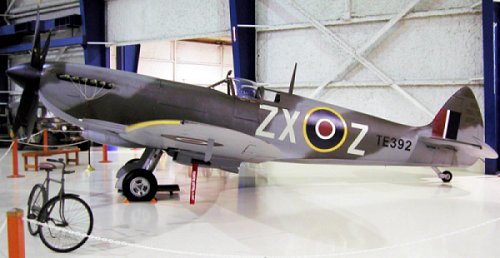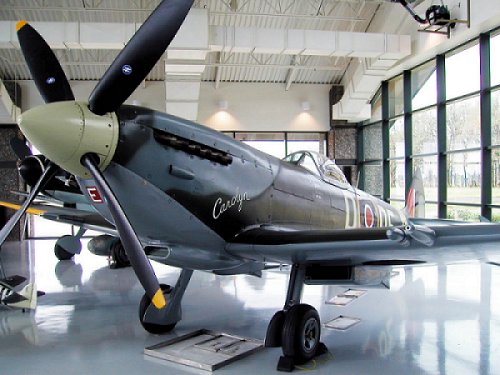Hurricane & Spitfire
Today, we beat a plowshare into a sword. The University of Houston's College of Engineering presents this series about the machines that make our civilization run, and the people whose ingenuity created them.
I like to point out that the necessities of war do little to drive invention. But those same necessities do drive people to make fine use of existing ideas. Look what WW-II did with the peacetime inventions of atomic fission, radar, and jet propulsion!
Case in point: Great Britain had two major fighter airplanes in WW-II: The Hawker Hurricane and the Supermarine Spitfire. The Hurricane represented fine foresight by Thomas Sopwith. Remember Snoopy playing a WW-I ace -- shouting, "Curse you, Red Baron!"? Snoopy imagined his doghouse to be the fabled Sopwith Camel.
In 1934, Sopwith, who'd become Chairman of the board of Hawker Engineering, committed his company to building the Hurricane. The design made good use of the current features of civilian aircraft. It was a monoplane with retractable landing gear and no external guy wires. Yet much of it was still covered with fabric
With a top speed of 340 miles an hour, the Hurricane would soon be outclassed. Yet it was maneuverable and well-made. By the time the smoke cleared, it'd shot down fifteen hundred German planes -- more than the rest of the RAF combined.

Hawker Hurricane (from a 1943 Warplane Spotter's Manual)
While the over-the-hill Hurricane was saving England in the 1940 aerial Battle of Britain, the Spitfire was hardly hatched. Its maker, the Supermarine Company, had started out making racing planes. In 1931, a Supermarine floatplane won the international Schneider Trophy. It also set a speed record of 407 miles an hour. During the mid-thirties Supermarine struggled to convert the technology of sport to that of combat. By 1938, the seaplane floats had been replaced with a retractable landing gear and the Supermarine had finally morphed into the Spitfire, Mark-I.
War began with a mere handful of Spitfires and a nightmarish array of design flaws. The fabric on the ailerons ballooned outward at high speeds and messed up its aerodynamics. The windscreen was hard to open. The fuel cut off in certain combat maneuvers.
One by one, the flaws were repaired. The first Mark-II Spitfire was delivered in August, 1940. This was Britain's darkest hour, and the aging Hurricane still bore the brunt of it.
But the war had far to go. Now the Spitfire evolved faster and further. At the end, Supermarine was making the Mark-XVI. In all, twenty thousand Spitfires were made in 150 versions. Their magnificent Merlin engine went through 28 versions, gradually increasing from a thousand to sixteen hundred horsepower.
The Spitfire finally surpassed the speed of that 1931 Schneider Cup winner. Still carrying some fabric covering, it became the first airplane to down an enemy jet in combat.
So we were saved by two great airplanes -- both forged in peace and triumphant in war, both beautiful in flight. And both remain engraved as surely upon our subconscious as Snoopy's Sopwith Camel.
I'm John Lienhard, at the University of Houston, where we're interested in the way inventive minds work.
K. Darling, Merlin-Powered Spitfires. North Branch, MN: Specialty Press, 2002.
Some Hawker Hurricane sites:
http://www.aviation-history.com/hawker/hurrcane.html
http://www.warbirdalley.com/hurry.htm
For the Supermarine Spitfire, click here:

Spitfire at the Lone Star Flight Museum, Galveston, Texas

Spitfire at the Evergreen Air Museum, McMinnville, Oregon
(both photos by John Lienhard)